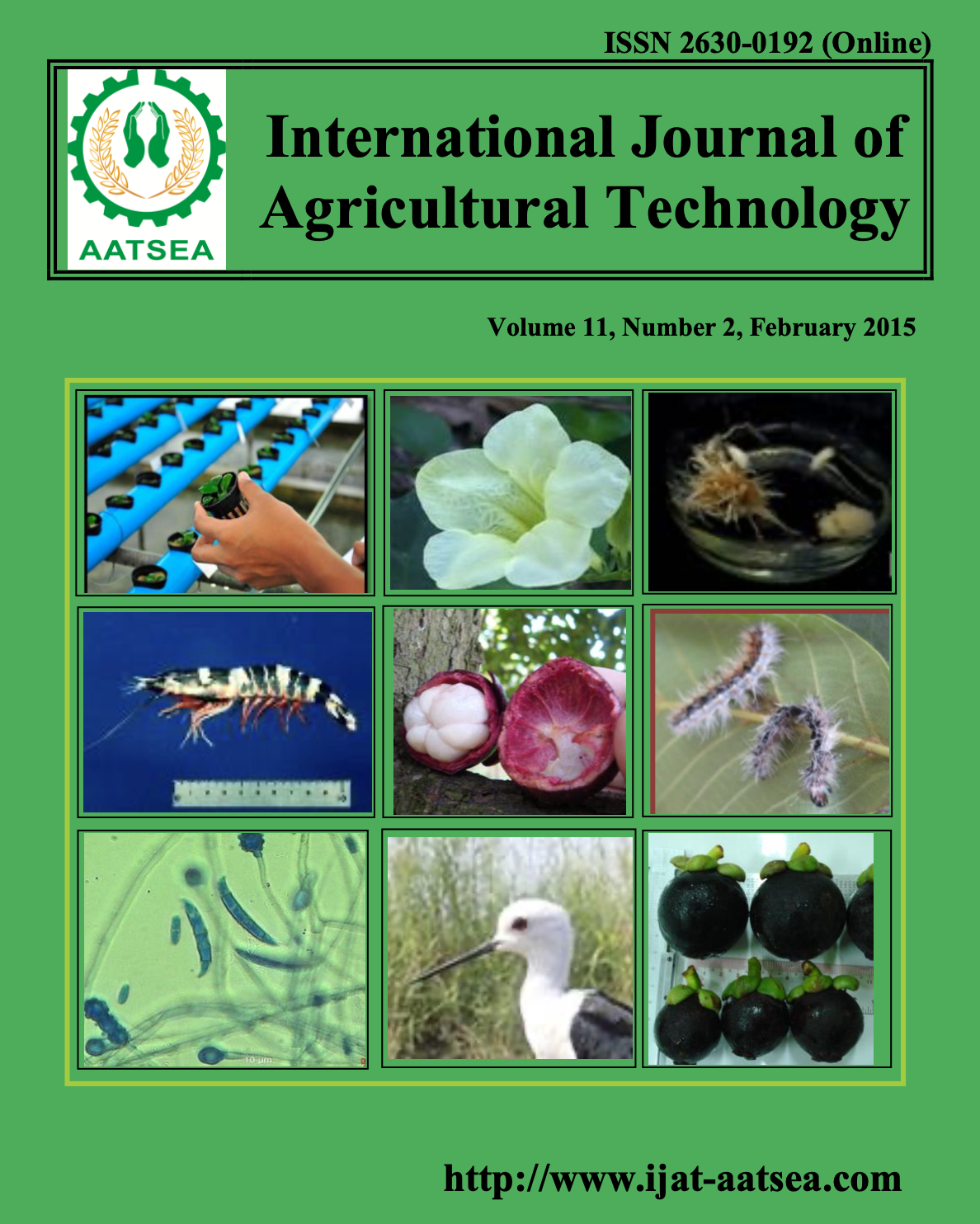Biological activity of endophytic fungi associated with palm trees
Main Article Content
Abstract
Article Details

This work is licensed under a Creative Commons Attribution-NonCommercial-NoDerivatives 4.0 International License.
References
Charoenporn, C., Kanokmedhakul, S., Lin, F. C., Poeaim, S. and Soytong, K. (2010). Evaluation of bio-agent formulation to control Fusarium wilt of tomato. African Journal of Biotechnology 9:5836-5844.
Frohlich, J. and Hyde, K. D. (2000). Palm Microfungi Fungal Diversity Research Series 3. Fungal Diversity Press.
Frohlich, J., Hyde, K. D. and Petrini, O. (2000). Endophytic fungi associated with palms. Mycological Research 104:1202-1212.
Luiz, H. R., Tabanca, N., Techen, N., Wedge, D.E., Pan, Z., Ulrich, R. B., Becne, J. J., Agramonte, N. M., Walker, L. A. and Moraes, R. M. (2012). Diversity and biological activities of endophytic fungi associated with micropropagated medicinal plant Echinacea purpurea (L.) Moench. American Journal of Plant Sciences 3:1105-1114.
Qadri, M., Johri, S., Shah, B. A., Khajuria, A., Sidiq, T., Lattoo, S. K., Abdin, M. Z. and Riyaz-Ul-Hassan, S. (2013). Identification and bioactive potential of endophytic fungi isolated from selected plants of the Western Himalayas. SpringerPlus 2:8.
Meca, G., Soriano, J. M., Gaspari, A., Ritieni, A., Moretti, A. and Mañes, J. (2010). Antifungal effects of the bioactive compounds enniatins A, A(1), B, B(1). Toxicon 56:480-485.
Rodrigues, K. F. and Samuels, G. J. (1990). Preliminary study of endophytic fungi in a tropical palm. Mycological Research 94:827-830.
Sibounnavong, P., Soytong, K., Divina, C. C. and Sofrio, P. K. (2009). In-vitro biological activities of Emericella nidulans, a new fungal antagonist against Fusarium oxysporum f. sp. lycopersici. Journal of Agricultural Technology 5:75-84.
Soytong, K. (1992). Biological control of rice blast disease by seed coating with antagonistic fungi. Songklanakarin Journal of Science and Technology 14:59-65.
Strobel, G. A. and Daisy, B. (2003). Bioprospecting for microbial endophytes and their natural products. Microbiology and Molecular Biology Reviews 67:491-502.
Walker, K. and Croteau, R. (2001). Taxol biosynthetic genes. Phytochemistry 58:1-7.
Wiyakrutta, S., Sriubolmas, N., Panphut, W., Thongon, N., Danwisetkanjana, K., Ruangrungsi, N. and Meevootisom, V. (2004). Endophytic fungi with anti-microbial, anti-cancer and anti-malarial activities isolated from Thai medicinal plants. World Journal of Microbiology and Biotechnology 20:272-278.
Woropong, J., Strobel, G. A., Ford, E. J., Li, J. Y., Baird, G. and Hess, W. M. (2001). Muscodor albus anam. nov., an endophyte from Cinnamomum zeylanicum. Mycotaxon 79:67-79.


